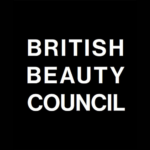2022 retail results are in. Nail and beauty premises took top spots when it comes to net growth across Great Britain, however hairdressers are the most likely to have closed
The Local Data Company’s most recent Retail and Leisure Trends Analysis charts the current state of the UK’s retail industry, spotlighting specific industries’ vacancy rates, openings, and closures.
Full-year results for beauty retail are varied. Whilst beauty salons and nail salons ranked in the top 10 fastest-growing retail categories, hairdressers saw a net loss of -527 premises. Making it the fastest-declining category by change in units.
What’s more, hair and beauty salons – where clientele have access to a more diverse range of services – have also witnessed a decrease of -165 units. Shedding light on the consequences of offering high-energy services in comparison to nail or beauty-specific treatments.
Despite remaining in net positive growth, barbers saw a decline in new premises throughout the year. Two years ago, this type of premises saw a +545 increase, making it the fastest growing sector. Last year, this growth dropped by 40%, to an increase of only 224 premises.
According to the Local Data Company, ‘the impact of a saturated market has pushed barbers out of the top 5; they saw the lowest net increase this subcategory has seen since records began in 2014.’
Certain beauty retail locations have been hit by an overarching theme of independent closures across the UK. According to the findings, independents saw a net increase of only 262 premises, a drop of 1895 units compared to 2021. On the other hand, multiples across all sectors saw positive growth from -10,059 in 2021 to -3,627 in 2022 – their best performance since 2016.
‘2022 was a difficult year for independents, as the removal of government support coincided with the first impacts of the energy crisis, forcing some businesses to close for good… (it was also) the first full year of trading without business rates relief,’ the report reads.
In a case study undertaken by the British Beauty Council, energy costs in salons were approximated to have risen by 94% from 2019 to 2022, proving that these socio-economic factors undoubtedly affected the hairdressing sector detrimentally.
You can download the report here.
Image: @mytownhouseuk via Instagram.




